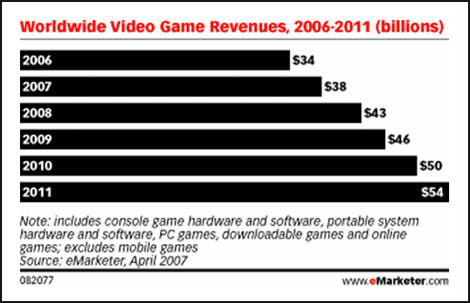The news today has caused a bit of an uproar. Generally, I try not to get involved in things like this, but I thought today I might try to interpret things.
I think it’s a good idea to start out by saying that it’s all about the money. It seems obvious, but you have to really take it on board before anything else can start to make any sense. We can’t imagine fat-cat suited producers sitting at their mahogany desks surrounded by strippers and bragging about there being no female faces on the bills they stuff into, ahem, crevices
.
 |
| The arrow really adds a lot to this graph. |
These guys aren’t sexist. Or maybe they are. But it doesn’t matter to them. It's about money. Their research must show that female-lead games make less money. They look at a binder of figures. Games with female leads and their profits vs similar games with male leads. The binder probably had fancy graphs and pie charts.
So when I set out to look into this debacle, I felt certain that I would discover a significant difference between similar games with male leads versus female.
Before we get into analyzing specific video games, I need to explain that I'll be adjusting sales figures by years. The way I am going to do this is, since the industry has grown each year since 2005, I’ll be adjusting the sales accordingly to correspond with overall industry growth over time
Have a look at this graph for a better understanding. Missing from this is the year 2005, the year that God of War came out, so I learned from another site that 2005 industry figure was ~27.67 billion.
Here are the games we are going to compare and my reasoning behind the comparisons:
Mirror’s Edge and Prince of Persia. Both cross-platform, both acrobatic themed action/adventure.
Portal and Halo 3: ODST. Both spin-offs of highly, highly successful franchises. Both short. The obvious problem with this comparison is that Portal gameplay appeals to a smaller niche than ODST’s. We’ll have to use our imaginations a bit here.
Heavenly Sword and God of War. Both PlayStation exclusives. Both slash’emup actions.
So let’s start the comparison. Prince of Persia, a male-lead game, that came out in 2008, shows sales of 1.98 million.
Mirror’s Edge, whose lead is a female, apparently sold 2.2 million since its 2007 release. Adjusted to reflect the 13% boost to the industry from 2007 to 2008, we might imagine sales of ~2.48 million. Here, the female protagonist (also amazingly not a part of a pre-existing franchise!) has the (grinning wildly here) Edge.
Let’s look at the next pair. The 2007 game Portal, in 2011, reported sales nearing 4 million, so I’m going to safely round up to an even 4. This does not include Steam sales, evidently.
Meanwhile Halo 3: ODST has apparently sold an incredible 6.13 million since 2009.
But, adjusting Portal’s figures into 2009*, and the puzzling game gets a 21% increase to 4.84 million.
 |
| In millions. Duh. |
Finally, the last two. Heavenly Sword shows 1.57 million, and was released in 2007. God of War, 2005, shows 4.617*. Let’s adjust. God of War’s already staggering figure gets an increase of 40%, bringing its number to 6,463,800. Kratos did more than four times better than its female rival.
But of course, there are some unanswered questions here. How much does having sequels impact the sales of the initial game? What percentage of a games total sales are made in the first year (unless its nearly all, as I imagine, all of these numbers are worthless.)? How much money was spent on marketing per dollar earned in male games vs female? What are the budgets of these games?
Still, I think there are some fairly interesting conclusions to draw from the above numbers. First off, even without the adjustment, all of these games met with at least reasonable success. While it seems 3 million+ is the ideal number for AAA producers, I'm sure they can be somewhat satisfied with only 2. (Producer gets 30% on a $60 game; times 2 mil= $36mil).
I have to say that I was rather surprised to come up with these fairly positive results. In every case here, the female protagonist seemed to make no difference on whether or not the game sold well. The only arguable failure was Heavenly Sword and I doubt there are many people running around claiming that was breaking any new ground for females in video games.
______________________________________________________________
*This gets iffy- obviously not all of Portal's sales were made in 2007, but without being able to see a breakdown year-by-year, I had to just run a simple adjustment.
**I don't know how much of those numbers are just from that year. It seems absurd to imagine such a huge number for the game when Portal took nearly four years to even get close.





I'm going to assume you're a female developer... Well I feel like you could have picked better sample games... Perhaps Half-Life (The first of course) And Portal 2? Portal gets the sequel edge, because it was never quite as popular as the Half-Life series. I also think it's safe to say that you have a touch of a journalist in you, but a game developer as well? I'm looking forward to hearing more about your new game Sprout in my E-Mail. Cheers!
ReplyDeleteAh- I'm a guy actually!
DeleteI think it was pretty fair to compare Portal to ODST... both of them are short spin-offs of popular titles. It wouldn't really make sense to compare Half-Life 1 to Halo 1 for this article because neither of them has a female protagonist...